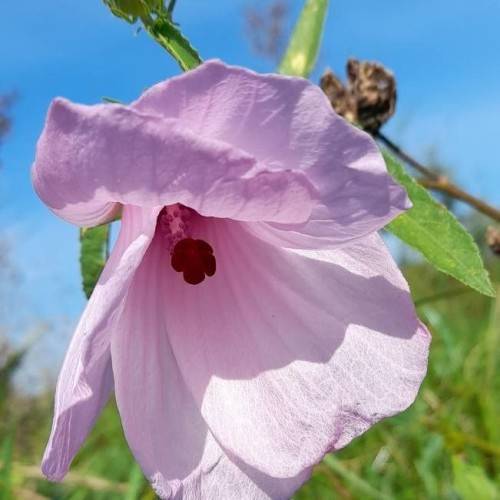
striped rosemallow
Hibiscus striatus subsp. lambertianus
Cycle:
Herbaceous Perennial
Watering:
Average
Hardiness Zone:
7 - 9
Flowers:
Flowers
Sun:
full sun,part sun/part shade
Leaf:
Yes
Growth Rate:
Low
Maintenance:
Moderate
Drought Tolerant:
Yes
Salt Tolerant:
Yes
Thorny:
Yes
Tropical:
Yes
Care Level:
Medium
watering
Watering for striped rosemallow (Hibiscus striatus subsp. lambertianus) should take place in moderation, as the plant is prone to root rot. During active growing months, it should be watered every 7-10 days, providing enough moisture to keep the soil lightly moist but not soggy. During the cooler months, watering requirements can be reduced to every 14-21 days. It's always a good idea to check the soil with your finger to make sure it's not too wet or dry, and adjust the watering accordingly.
sunlight
Striped rosemallow (Hibiscus striatus subsp. lambertianus) plants require a lot of sunlight to thrive. In fact, they should receive at least 6 hours of sunlight per day. The best time of day to provide light is from mid-morning to mid-afternoon. During this time, indirect sunlight is the most beneficial for the plant. When possible, try to avoid placing the plant in direct sun during the hottest part of the day.
pruning
For striped rosemallow, pruning should be done twice a year, once in early spring and once more in mid-summer. During the spring prune, you should remove dead and diseased branches, as well as crossed and rubbing branches, and any suckers emerging from the base. In mid-summer, you should cut back the stems of the plant to just above the nodes (where the branches divide). This should make the plant shorter and bushier. Do not prune more than 1-third of the plant at any given time and always use sharp, clean pruning tools.
